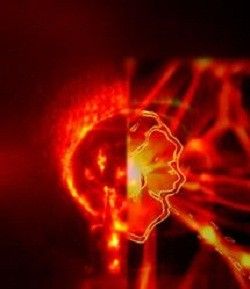Scientists Get Clue to How Universe Got Its Magnetism

Scientists from the Oxford University have got a clue to how the universe obtained its magnetism.
The scientists used a laser to create magnetic fields which is similar to the magnetism of the universe. During the experiment, they used a high-power laser to explode a rod of carbon, similar to pencil lead, in helium gas. The explosion was designed to mimic the cauldron of plasma - an ionized gas containing free electrons and positive ions - out of which the first galaxies formed. They found within a microsecond of the explosion strong electron currents and magnetic fields formed around a shock wave.
Scientists took these results, scaled them and found that their measurements matched the "magnetic seeds" predicted by theoretical studies of galaxy formation. Magnetic seeds are tiny magnetic fields that are found during the formation of galaxies.
Magnetic fields exist throughout galactic and intergalactic space. What is puzzling is how they were originally created and how they became so strong, says scientists.
"Our experiment recreates what was happening in the early Universe and shows how galactic magnetic fields might have first appeared," says Dr Gianluca Gregori from the Oxford University, who led the team. "It opens up the exciting prospect that we will be able to explore the physics of the cosmos, stretching back billions of years, in a laser laboratory here on Earth," he said.
"In the future, we plan to use the largest lasers in the world, such as the National Ignition Facility at the Lawrence Livermore National Laboratory in California (USA), to study the evolution of cosmic plasma," he said.
© Copyright IBTimes 2025. All rights reserved.





















